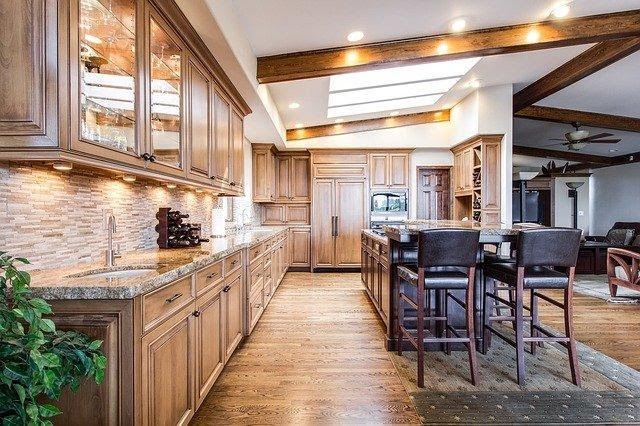Virtually every part of a kitchen has endless creative possibilities. Deciding what you want is only the first step. After that, you have to figure out how to implement your ideas into your kitchen design. House flippers, like Home Offer Solutions in San Antonio, carefully analyze the shape of a kitchen before choosing a design layout. If you jump the gun and start renovating before having a clear vision for the overall design, you could be in trouble later.
Kitchen layouts are based on the work triangle: the imaginary line drawn from three crucial aspects of your kitchen, i.e., food storage, food preparation, and the cleaning section. Before you start a kitchen redesign project, determine how much space you’ll need between these sections.
The U-Shaped Kitchen:
The U-shaped kitchen design can dramatically reduce the walking distance between the sink, stove, and refrigerator. U-shaped kitchen designs consolidate the most-used appliances on one side of the room, leaving the other side clear for entertaining. For small kitchens, a U-shaped layout creates a visual separation of your living and cooking spaces.
L-Shaped Kitchen Design
L-shaped kitchens generally feature a full-width bench with another island bench across from it, with either the benches or the ‘L’ shape providing opportunities to cater meals for larger groups of people.
The L-shaped kitchen is the perfect solution if you’re trying to squeeze in as much storage space as possible. You won’t have to compromise between a large work area and storage space like you would when choosing a U-shaped layout. Your choice of appliances will be more flexible as L-shaped kitchens often have a long worktop for your cooking and preparation area. And there is plenty of space to include a handy island or bar for extra storage.
G-Shaped Kitchen:
The G-shaped kitchen layout is efficient, as it offers flexibility and more than enough storage space. The format is not as forgiving as the L-shaped kitchen design, and while it does allow for easier access to an island, it lacks the same flexibility in all other areas.
Corridor Kitchen:
The corridor kitchen has an open space that runs down one side of the house and then returns at the end of the room. The main benefit to this kitchen style is that it provides all of the cooking facilities without cutting into your home’s valuable living space. The only negative about a corridor layout is that you lose some counter space and cabinet storage. Still, these losses are offset by square footage for other activities like working on crafts after dinner, which many people enjoy.
Single-Wall Kitchen:
Want an airy-feel in your home? The Pullman kitchen is designed for apartments and tiny homes where you want to open the space. You can use an island to create additional working space, and a small moveable table can provide eating space.
The very first part of the design project is to choose the layout. How are you going to use the space? The color and aesthetics don’t matter unless the place is functional for you. Once you have determined the layout, you can make your choices about colors and appliances.
